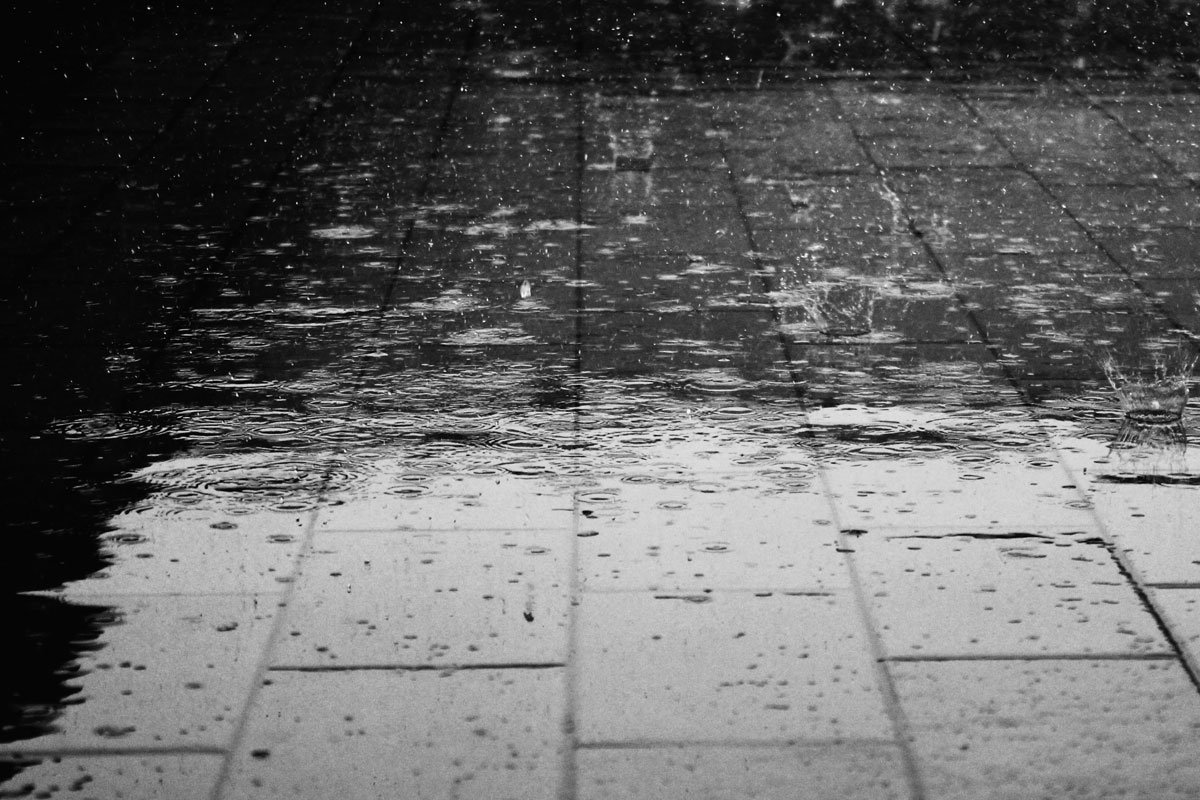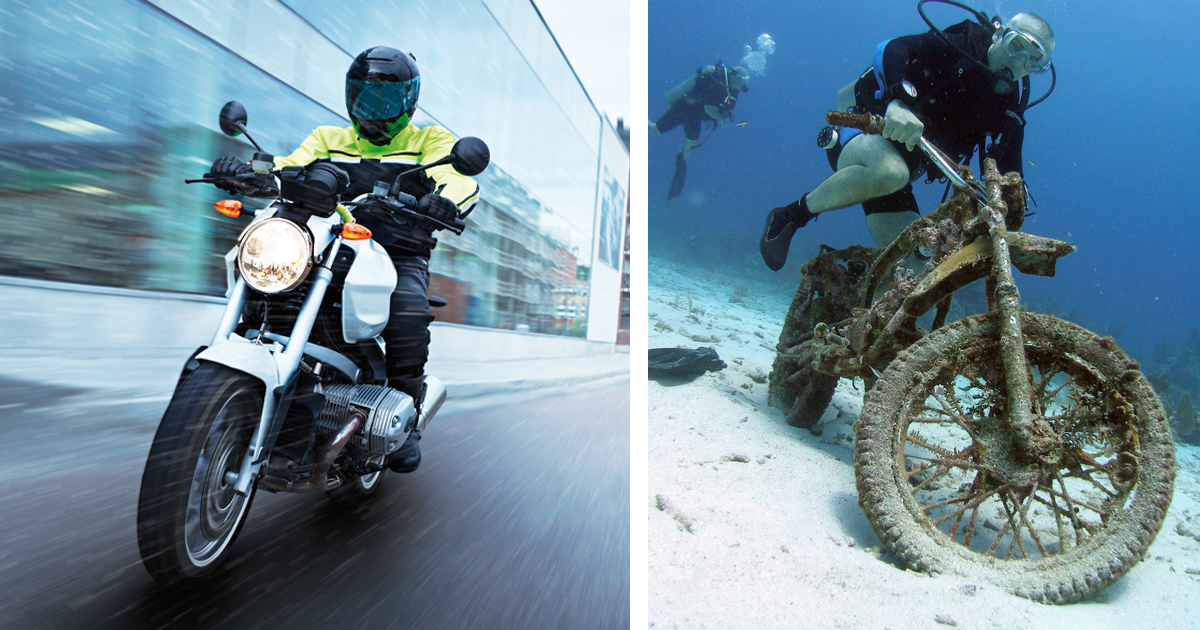The meaning of waterproof
Published on: 08 November 2016

Question: When does waterproof not mean waterproof? When the word is applied to motorcycle clothing!
Obviously, we’re being a little glib, but there’s more than a germ of truth in what we’ve said. The subject of waterproofing is the single most contentious and complex subject in the world of motorcycle apparel.
We get more questions, queries, comments and complaints about water ingress than we do about any other aspect of rider wear. There is, or has been, we fear, a mismanagement of expectations when it comes to the ability of biking jackets, trousers, gloves and boots to keep a rider dry.
We may even unwittingly have played a part in this but, without doubt, the manufacturers, in order to create what might be termed a competitive advantage, have made claims that are, to say the least, misleading.
In this short article, we’re going to try and set the record straight. The first point we would make is that if you want to travel from point A to point B and always stay completely dry, you should buy a car. If you ride a bike in the pouring rain for long enough, or hard enough, you will eventually get wet.
Water runs off your helmet and down your neck. It will be thrown up from the road and up your jacket. It will hit your gloves and enter the sleeve. Or rise up your boot to your leg. If the pressure of water is strong enough, and the duration of the ride is long enough, there is no garment out there that can guarantee to keep you totally dry. Any manufacturer who claims differently is lying.
The most common claim is that a material is backed by a membrane, like Gore-Tex, Miporex or Dryway that is supposed to be 100% waterproof. From this, the manufacturers will then sometimes imply or suggest that their jackets or trousers are completely waterproof.
The reality is that they are not, for all the reasons already outlined! What makes the issue even more confusing is that, in the motorcycle industry, there is no accepted or agreed definition of what waterproof, or 100% waterproof, means.
So what we have, in essence, is a bit of a mess; a scenario in which manufacturers can set their own benchmark, which makes it almost impossible for a motorcyclist to make an informed judgement on a particular garment’s waterproof qualities.
But even the best quality waterproof membrane is meaningless if the seams of a jacket are not taped with waterproof tape, or if the pockets are not also waterproof. And then there are the zips, the air vents, the collar, the sleeves and so on.
So where do we end up? Well, as we’ve suggested, there’s no such thing as a jacket, a pant, a glove or a boot that can keep you 100% dry.

But your chances of staying dryer for longer are improved if you buy your clothing from one of the more technical brands out there. It’s not our position to say which brands you can trust and which you cannot in this respect. You need to do your research. Visit the manufacturers’ websites. Visit some of the forums.
Talk to dealers. The highest priced gear isn’t always the best, in our view. People like Halvarssons, for example, produce gear that is far more technical than its pricing suggests. But beware, we would say, of anything that is too cheap. If the brand in question can always be found being discounted, or being touted about by the George Whites of this world, or the other pile-it-high sellers, you can be pretty sure that you’re not getting the most technical and reliable gear.
Which brings us to another point. Waterproofing is not everything. As in so many things, motorcycle clothing is a compromise. The most waterproof clothing would not have a breathable membrane. It would keep water out, but you would sweat horribly. In fact, perspiring on the bike can be much more uncomfortable than rain. They will sometimes do this at great speed. Frankly, on a sportsbike, you will all too often stand little chance of knowing what’s going on, and what’s closing in on you.
The other issue is that most of us want a jacket and trousers that you can wear all year round. An outfit that works on a miserable, cold and wet morning, but also on a glorious blast down through France, Spain or Italy in the middle of summer.
For such riding, you need unzippable, vents. To keep air moving across the body, you open the vents. It’s vital if you want to stay calm, collected and cool. But in the rain, these vents are an inevitable weak point for water ingress. So, when you buy motorcycle clothing, think about how you might use it. Staying dry is something we all want, but the most fun is to be had when the sun’s out and, for those days, you need ventilation.
There’s not a lot else we have to say. If staying dry is the most important consideration, you should of course avoid leather. A leather jacket can be a very cool thing to wear, but they’re for wearing on nice days when you’re not venturing too far from home. A leather jacket or a leather pant is about as much use in a rain storm as a cow is to a Findus hamburger.
I’m going to close with a few words on boots and gloves. The basic tale is the same, but even more so. On a pair of boots, water will run down your legs. It will find its way through the zip or laces. And eventually, in heavy rain, the leather or Lorica will become so sodden that it will work its way through to your foot. After all, down there, near the road, is probably the wettest place of all.
Gloves also take a hammering, although this depends on the bike and whether there’s a fairing, for example. Leather gloves will let water in most easily; whatever they’re lined with, so go for textile if staying dry is important. But don’t let us mislead you. Whatever you put on your hands, your fingers will eventually get wet.
Which leads me to another fact about gloves that you may not have realised. If you turn on your heated grips when it’s raining, the warm air will suck water into your gloves, making them less waterproof! We thought you should know.
Shop for WATERPROOF JACKETS
Shop for WATERPROOF TROUSERS
































































